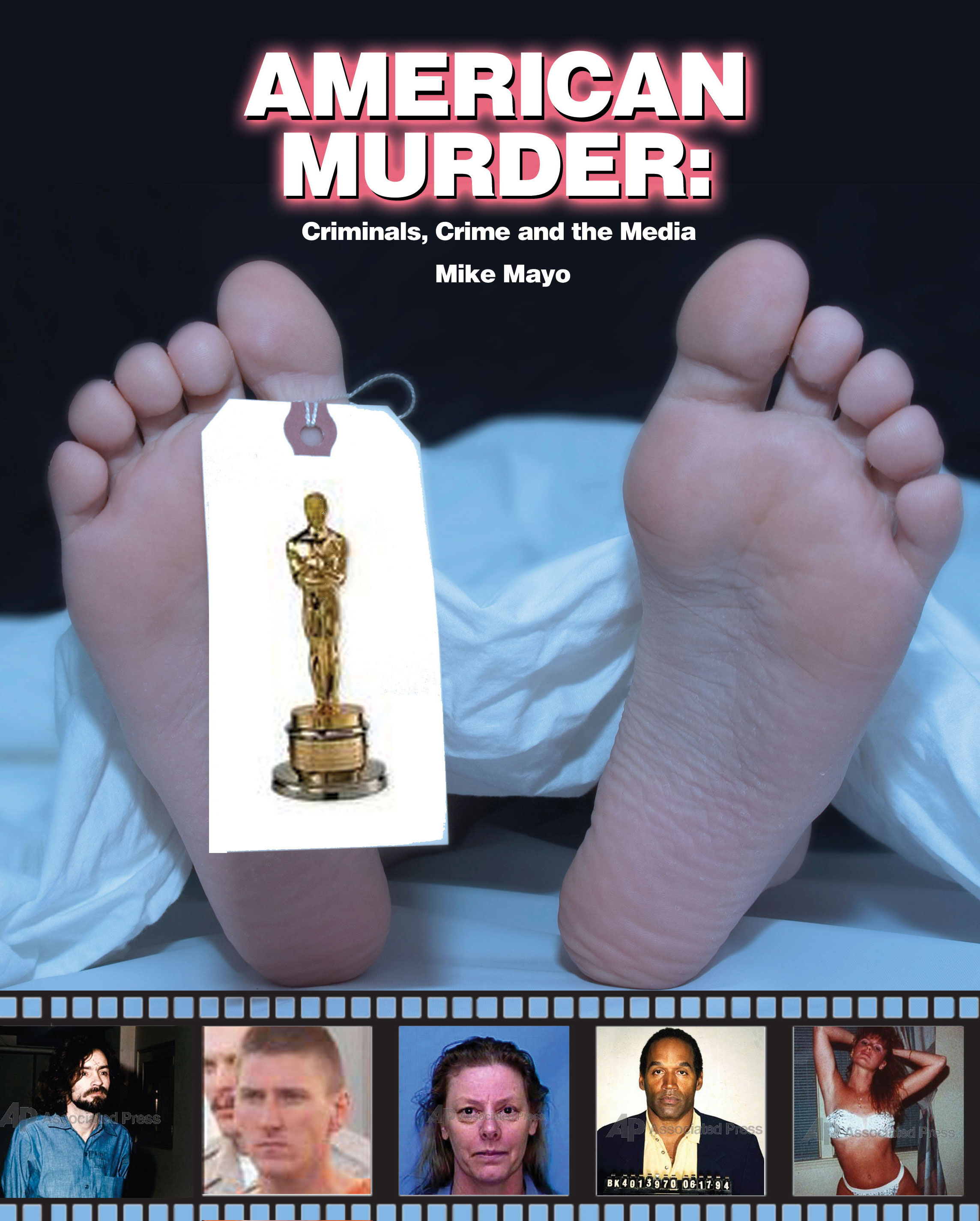 by Robin Sax
by Robin Sax
Decision 2008 consumes television 24/7. From CNN to FOX to Comedy Central, it’s all election all the time. It is not the typical Republican vs. Democrat or Democrat vs. Republican mudslinging (at least not yet). For now it is all about who is going to take the Democratic party. Will it be Hillary Clinton or Barack Obama? Who will take on the Republicans? Who can beat John McCain?
Who knew that the primaries could be so exciting? It’s no wonder that the talking heads are talking their heads off. This is big stuff. It’s bigger than political parties. It’s bigger than gender, it’s bigger than race. It’s all of it in one election and then some. Will our country continue to break new ground in creating political history?
For most Americans, crime is a key issue. And no wonder. This is the day of missing (and dead) co-eds, cops who kill girlfriends and wives, students who shoot on college campuses, moms who drown their kids, and Internet sex scandals to name just a few. And if it were not for these elections these crime stories are what the pundits would be pontificating about.
So, what is Barack’s stance on crime? What is Hillary’s platform? Just how conservative is John McCain? I, myself, had no clue until I began writing this article. I could tell you their differences on the economy, health care, the war, and immigration, but have not heard a thing about crime.
Granted, crime is not usually the defining issue in the primaries. But with the election in only 223 days wouldn’t you like to know what your candidate thinks about gun control, sex offenders, Three Strikes, juvenile crimes, drugs, defendant’s rights, and gangs? I certainly would. For now we are supposed to be satiated with a few throwaway sound bites. And why do we have to wait until it’s McCain vs. Obama or McCain vs. Clinton, to know which candidate wants to take a bite out of crime?
Clinton has been described as more prosecution oriented and leans toward more law and order than her counterpart Obama. According to Bob Egelko in the San Francisco Chronicle, “The two differ on crime-related issues that have a lower profile but affect many thousands of prisoners, most of them minorities - the disparity between sentences for offenses involving crack and powder cocaine, and the merits of federal mandatory-minimum sentencing laws. On both, Clinton lines up with the prosecution, Obama with the defense.” Interestingly, both favor capital punishment, in certain circumstances.
So here’s where they stand on crime:
ISSUE | CLINTON | OBAMA | MCCAIN |
CAPITAL PUNISHMENT | Supports death penalty but has tilted her campaign to focus on Innocence Protection Act to divert attention away from her support of capital punishment by legislating that all people executed would participate in DNA testing. | Believes death penalty does little to deter crime, but there are some crimes--mass murder, the rape and murder of a child--that warrant it. On the other hand, the way capital cases were tried in Illinois at the time was so rife with error, questionable police tactics, racial bias, and shoddy lawyering, that 13 death row inmates had been exonerated. | Supports the most broadened use of the death penalty. Has voted “YES” to limit death penalty appeals.
|
GUN CONTROL | Supports sensible gun control legislation. In her words: “We have to enact laws that will keep guns out of the hands of children and criminals and mentally unbalanced persons. Congress should have acted before our children started going back to school. I realize the NRA is a formidable political group; but I believe the American people are ready to come together as a nation and do whatever it takes to keep guns away from people who shouldn’t have them.” | Respects 2nd Amendment, but local gun bans ok. Provide some common-sense enforcement on gun licensing. In
2000, co-sponsored bill to limit purchases to 1 gun per month.
Keep guns out of inner cities--but also problem of morality. Ban semi-automatics, and more possession restrictions.
NO on prohibiting lawsuits against gun manufacturers. | Believes that the right of law-abiding citizens to keep and bear arms is a fundamental, individual Constitutional right. “We have a responsibility to ensure that criminals who violate the law are prosecuted to the fullest, rather than restricting the rights of law-abiding citizens," he said. "Gun control is a proven failure in fighting crime. Law- abiding citizens should not be asked to give up their rights because of criminals--criminals who ignore gun control laws anyway.” |
DRUGS | Favors a distinction between crack and powder cocaine in order to minimize racist impact of current laws. No retroactive application.
| Favors a lower sentencing guideline for crack-related crimes, and bring them closer to sentences for powder cocaine. Favors applying the new terms retroactively to current prisoners. Wants to establish a DEA office in New Orleans to stop drugs along that region. | Wants to increase penalties for selling drugs, supports the death penalty for drug kingpins, favors tightening security to stop the flow of drugs into the country, and wants to restrict availability of methadone for heroin addicts. He said the Clinton administration was “AWOL on the war on drugs” and he would push for more money and military assistance to drug-supplying nations such as Colombia. |
REPEAT OFFENDER SENTENCING | Believes mandatory sentencing is too widely used. Thinks we need more diversion programs. But supports "Three Strikes" laws, particularly for violent offenders. | Seeks to promote fairness in the criminal justice system. Wants to ban racial profiling, eliminate disparities in criminal sentencing. | Stricter sentencing for repeat and violent offenders. |
GANGS | Hillary was one of 44 Democrats who voted for the anti-gang bill—increased penalty for gang association. | Voted against anti-gang bill due to concern about racist effects of its use. Therefore, no extra penalty for gang association. | Supports programs that provide job training and placement services for at-risk youth. |
JUVENILE OFFENDERS | Spend more money on programs to help identify and work with “at risk” kids. Need more hotlines and workers to identify early warning signs for homicidal or suicidal kids. | Wants to provide funding for military-style "boot camps" for first-time juvenile felons.
| Supports prosecuting more children as adults who commit violent crimes. Believes in increased penalties for crimes committed on school grounds. Believes in prosecuting youths accused (unless extremely young) of a felony as adults.
|
HATE CRIMES | Clinton sponsored the Local Law Enforcement Hate Crimes Prevention Act. Under this act the government would provide technical, forensic, prosecutorial, or other assistance in the criminal investigation or prosecution of any violent crime that is motivated by prejudice based on the race, color, religion, national origin, gender, sexual orientation, or disability of the victim or is a violation of hate crime laws.
| Wants to strengthen the enforcement of hate crimes legislation. | McCain agrees that funding should be increased for community policing programs. “Increases should be implemented with state and local government commitments,” he says. With regard to “hate crimes”: “All but 13 states have hate crimes statutes. Federalizing all such crimes will simply obstruct justice by forcing them into clogged federal courts.”
|
SEX CRIMES | Favors a national coordinated effort of the Amber Alert. Supports stricter sentences for sex offenders. | Supported bills with greater restrictions on sex offenders. | McCain sponsored the Sexual Offender Tracking and Identification Act Establish a national database at the FBI to track each person who has been convicted of a criminal offense against a minor or a sexually violent offense; or is a sexually violent predator.
|
DEFENDANT’S RIGHTS | Mandatory sentencing has been too widely used. Clinton says: “We have to do all of these things: We do have to go after racial profiling. I've supported legislation to try to tackle that. We have to go after mandatory minimums. You know, mandatory sentences for certain violent crimes may be appropriate, but it has been too widely used. And it is using now a discriminatory impact. We need diversion, like drug courts. Non-violent offenders should not be serving hard time in our prisons. They need to be diverted from our prison system.” | Believes in legislation to videotape defendant interrogations and confessions. Wants to recruit more and better public defenders by initiating loan forgiveness programs | Supports programs to provide prison inmates with vocational and job-related skills and job-placement assistance when released. Supports programs to provide prison inmates with drug and alcohol addiction treatment.
|
So, what does this mean? If crime is YOUR one and only issue, then McCain is your man, but not by much. Neither Clinton nor Obama are soft on crime. But in the end, as a fellow blogger Jeralyn on Talk Left said, “To say Obama is more progressive on crime issues or that he takes the defense line while Hillary toes the prosecution line, is not accurate. Neither one is particularly progressive or defense oriented. Their minor differences are just that, minor.” The ultimate question is, will any of the nominees turn into a president that will pave the way as a leader in crime and punishment? That, ladies and gentleman, remains to be seen.
*Update: See Cynthia Hunt's post on Republican V.P. nominee Sarah Palin's stance on crime: http://womenincrimeink.blogspot.com/2008/09/republicans-rock-star-barracuda-cut-her.html
 "Lady in the Lake"
"Lady in the Lake" 







 remains, and, if so, how they came to be buried there. Whether or not these possible unidentified remains are victims of Charles Manson or his followers isn't the point. According to
remains, and, if so, how they came to be buried there. Whether or not these possible unidentified remains are victims of Charles Manson or his followers isn't the point. According to 









 There's a new case getting the attention of the media here in Houston that will test the stomachs of those chosen to sit on the jury. Joshua Royce Mauldin (pictured left) is currently on trial for putting his two-month-old baby daughter in a
There's a new case getting the attention of the media here in Houston that will test the stomachs of those chosen to sit on the jury. Joshua Royce Mauldin (pictured left) is currently on trial for putting his two-month-old baby daughter in a 



















